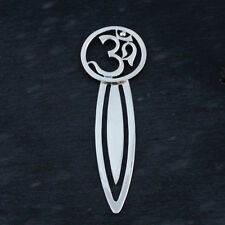Understanding the Om Symbol: A Comprehensive Guide
The Om symbol, often depicted as a three-part sound, is a significant and multifaceted symbol in various cultures and spiritual traditions. Whether you’re a practitioner of yoga, a student of Hinduism, or simply curious about its meaning, this guide will delve into the various dimensions of the Om symbol.
Origins and Historical Significance

The Om symbol has its roots in ancient India, where it is considered to be one of the oldest symbols in Hinduism. It is believed to be the primordial sound from which the universe emerged. The symbol itself is composed of three distinct parts: the A, U, and M sounds, which are often pronounced as “Aum” or “Om” in English.
Historically, the Om symbol has been used in various religious and spiritual contexts. In Hinduism, it is considered to be a sacred sound that represents the unity of the universe. It is often chanted during meditation, yoga practices, and religious ceremonies.
Symbolic Meanings

The Om symbol carries a multitude of meanings and interpretations. Here are some of the key symbolic meanings associated with the Om:
-
Creation and Destruction: The Om symbol represents the cycle of creation and destruction. The A sound represents creation, the U sound represents preservation, and the M sound represents destruction.
-
Unity and Oneness: The Om symbol is often seen as a representation of the unity of the universe. It signifies the interconnectedness of all living beings and the oneness of existence.
-
Divinity: In Hinduism, the Om symbol is considered to be a representation of the divine. It is often associated with the Supreme Being, Brahman, and is used to invoke the presence of the divine during meditation and prayer.
-
Transformation: The Om symbol is also associated with transformation and spiritual growth. It is believed to help practitioners transcend the limitations of the physical world and achieve enlightenment.
Om in Different Cultures

The Om symbol is not exclusive to Hinduism; it has been adopted and adapted by various cultures and spiritual traditions around the world. Here’s a brief overview of its presence in different cultures:
| Culture | Significance |
|---|---|
| Hinduism | Represents the unity of the universe, creation, destruction, and divinity. |
| Buddhism | Symbolizes the impermanence of life and the interconnectedness of all beings. |
| Jainism | Represents the eternal soul and the cycle of rebirth. |
| Yoga | Used as a meditation tool to focus the mind and invoke the divine. |
| New Age Movement | Symbolizes the universal energy and the interconnectedness of all things. |
Practical Applications
The Om symbol has practical applications in various aspects of life, including meditation, yoga, and spiritual practices. Here are some ways in which the Om symbol is used:
-
Meditation: Chanting the Om sound during meditation can help practitioners focus their minds and achieve a state of inner peace.
-
Yoga: The Om symbol is often used as a part of yoga practices to invoke the divine and promote spiritual growth.
-
Religious Ceremonies: The Om symbol is used in various religious ceremonies to invoke the presence of the divine and express devotion.
-
Art and Decor: The Om symbol is often used in art and decor to represent spiritual beliefs and promote a sense of peace and harmony.
Conclusion
The Om symbol is a powerful and multifaceted symbol that has been used for centuries in various cultures and spiritual traditions. Its origins, symbolic meanings, and practical applications make it a significant and enduring symbol of unity, div


